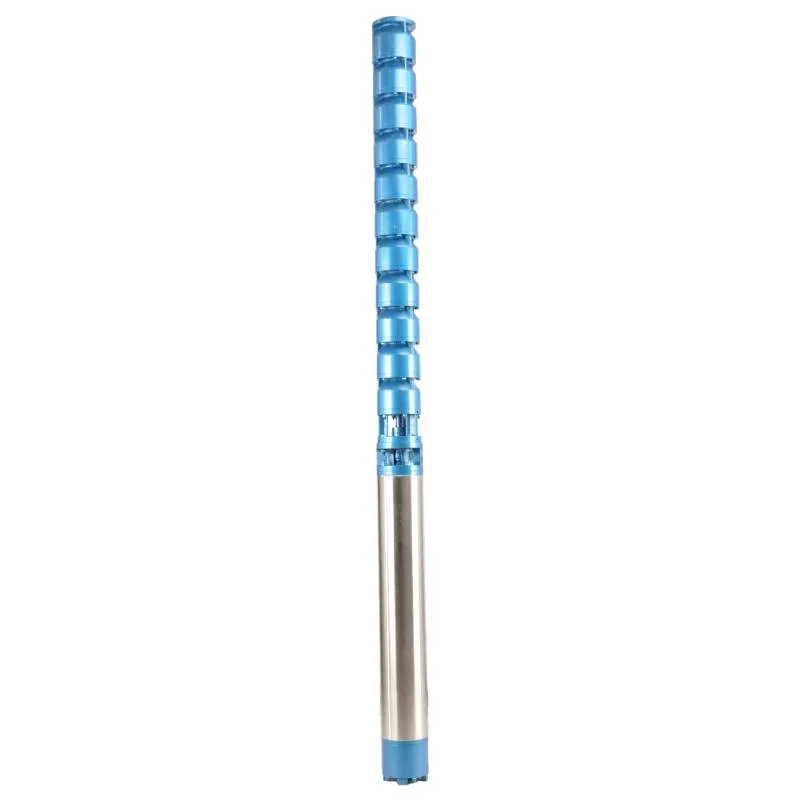Nov . 08, 2024 13:36 Back to list
Comparison of Water-Filled and Oil-Filled Submersible Pumps for Efficiency and Performance
Water-Filled vs. Oil-Filled Submersible Pumps A Comprehensive Comparison
In the realm of submersible pumps, two main types dominate the industry water-filled and oil-filled pumps. Both serve essential functions across various applications, from agricultural irrigation to wastewater management. However, understanding the differences between these two types is crucial for selecting the right pump for specific purposes. In this article, we will explore the key characteristics, advantages, and disadvantages of water-filled and oil-filled submersible pumps.
Water-Filled Submersible Pumps
Water-filled submersible pumps, as the name implies, use water as the primary cooling and lubricating medium. These pumps are designed to operate in wet conditions, making them suitable for environments where submersion is inevitable. The motor is cooled by the water surrounding it, which helps in dissipating heat generated during operation.
Advantages of Water-Filled Pumps
1. Environmentally Friendly Water-filled pumps are often seen as a more environmentally friendly option since they do not contain oils that can leak and cause contamination. They pose minimal risk to nearby soil and water systems.
2. Less Maintenance With fewer moving parts and the absence of oil-based fluids, water-filled pumps typically require less maintenance. This can lead to cost savings over time for users.
3. Cost-Effective Generally, water-filled pumps tend to be more affordable, both in initial purchase price and in long-term operational costs. Their simpler design contributes to lower manufacturing costs.
4. Versatility These pumps can handle various water conditions, including freshwater and slightly contaminated water, making them suitable for a wide range of applications.
Disadvantages of Water-Filled Pumps
1. Temperature Limitations Water-filled pumps can be susceptible to temperature variations. In extremely hot conditions, the water may evaporate, leading to overheating. Conversely, in freezing conditions, the water can freeze and damage the pump.
Oil-Filled Submersible Pumps
water filled vs oil filled submersible pump

Oil-filled submersible pumps utilize oil, often a mineral or synthetic oil, for motor cooling and lubrication. These pumps are particularly common in a variety of industrial applications where water is not the primary medium or where more robust performance is required.
Advantages of Oil-Filled Pumps
1. Enhanced Cooling The oil used in these pumps has a higher boiling point than water, allowing for better heat dissipation in high-demand applications. This means that oil-filled pumps can operate efficiently under more extreme conditions.
2. Longer Lifespan The lubrication provided by oil can reduce friction and wear on the motor components, often leading to a longer operational lifespan compared to water-filled variants.
3. Submersible Performance These pumps can maintain their performance in deeper water depths, making them suitable for applications requiring significant submersion.
Disadvantages of Oil-Filled Pumps
1. Environmental Concerns One of the most significant downsides of oil-filled submersible pumps is the potential environmental impact if there is a leak. Oil can contaminate water sources, posing a risk to both aquatic life and human health.
2. Higher Initial Costs Typically, oil-filled pumps are more expensive upfront due to their complex design and use of higher-quality materials.
3. Maintenance Needs Oil-filled pumps may require more regular maintenance, including oil checks and potential replacements, which can lead to increased operational costs over time.
Conclusion
When deciding between water-filled and oil-filled submersible pumps, it is essential to consider the specific application, environmental factors, and budget constraints. Water-filled pumps offer advantages in terms of cost-efficiency and environmental safety, making them suitable for less demanding conditions. On the other hand, oil-filled pumps excel in high-temperature and deep water scenarios due to their superior cooling and lubrication properties but come with higher costs and environmental risks.
By carefully assessing the needs of your operation and understanding the strengths and weaknesses of each type of pump, you can make a more informed decision that will lead to improved efficiency and performance in your pumping applications.
-
Submersible Water Pump: The Efficient 'Power Pioneer' of the Underwater World
NewsJul.01,2025
-
Submersible Pond Pump: The Hidden Guardian of Water Landscape Ecology
NewsJul.01,2025
-
Stainless Well Pump: A Reliable and Durable Pumping Main Force
NewsJul.01,2025
-
Stainless Steel Submersible Pump: An Efficient and Versatile Tool for Underwater Operations
NewsJul.01,2025
-
Deep Well Submersible Pump: An Efficient 'Sucker' of Groundwater Sources
NewsJul.01,2025
-
Deep Water Well Pump: An Efficient 'Sucker' of Groundwater Sources
NewsJul.01,2025
-
 Submersible Water Pump: The Efficient 'Power Pioneer' of the Underwater WorldIn the field of hydraulic equipment, the Submersible Water Pump has become the core equipment for underwater operations and water resource transportation due to its unique design and excellent performance.Detail
Submersible Water Pump: The Efficient 'Power Pioneer' of the Underwater WorldIn the field of hydraulic equipment, the Submersible Water Pump has become the core equipment for underwater operations and water resource transportation due to its unique design and excellent performance.Detail -
 Submersible Pond Pump: The Hidden Guardian of Water Landscape EcologyIn courtyard landscapes, ecological ponds, and even small-scale water conservancy projects, there is a silent yet indispensable equipment - the Submersible Pond Pump.Detail
Submersible Pond Pump: The Hidden Guardian of Water Landscape EcologyIn courtyard landscapes, ecological ponds, and even small-scale water conservancy projects, there is a silent yet indispensable equipment - the Submersible Pond Pump.Detail -
 Stainless Well Pump: A Reliable and Durable Pumping Main ForceIn the field of water resource transportation, Stainless Well Pump has become the core equipment for various pumping scenarios with its excellent performance and reliable quality.Detail
Stainless Well Pump: A Reliable and Durable Pumping Main ForceIn the field of water resource transportation, Stainless Well Pump has become the core equipment for various pumping scenarios with its excellent performance and reliable quality.Detail
